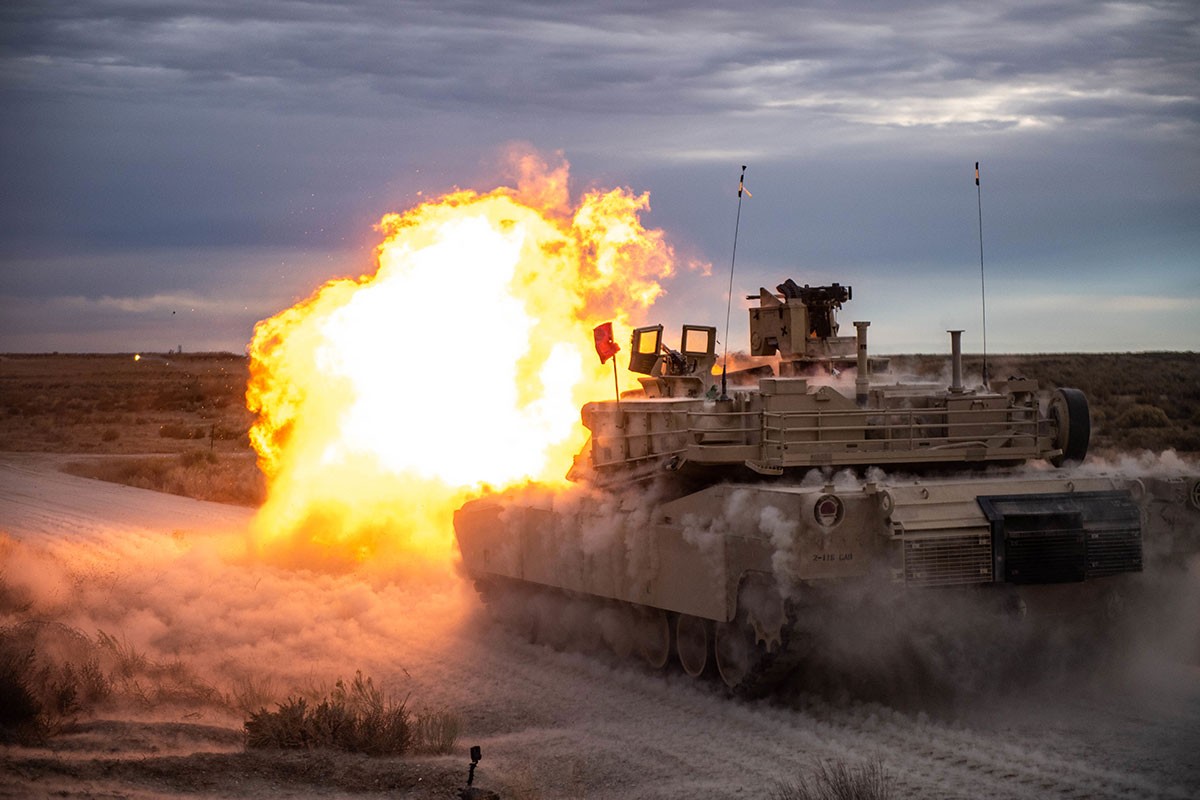$20 million grant funds effort to develop ultra-high strength and lightweight steels for U.S. Army
Posted by Nancy Bowles

Missouri S&T researchers will develop a new type of steel for the U.S. Army’s next-generation combat vehicles. The researchers will also retrofit the M1 Abrams tank (pictured) to make it lighter while maintaining or improving blast resistance. Photo credit: U.S. Army.
As the U.S. Army modernizes weapons systems and combat vehicles, researchers at Missouri S&T are developing lightweight and ultra-high-strength steels for next-generation combat vehicles that improve blast resistance and lower transportation costs.
“Missouri S&T offers one of only seven metallurgical engineering programs in the U.S.,” says Dr. Laura Bartlett, the Robert V. Wolf Associate Professor in Metallurgical Engineering and lead researcher for the project. “We also have a history of working with the military, so this research was a natural fit.”

Bartlett and her team are developing lightweight steel with strength-to-weight ratios as high as titanium alloys but at a much lower cost and increased environmental sustainability to produce. Steel is the most recycled material on earth, she says. Moreover, steel production creates less carbon dioxide than production of other lightweight alloys such as aluminum and magnesium, Bartlett adds. This project involves a materials-by-design approach to discover, develop and bridge the gap between laboratory scale and commercial development of these and other ultra-high-strength steels for the military.
Along with building next-generation vehicles, the Army is interested in retrofitting existing combat vehicles such as its M1 Abrams tank with lightweight and high-strength steel armor systems and other components while maintaining or improving blast resistance. Currently, the weight of these tanks makes transporting them by air to difficult-to-reach areas cost-prohibitive.
A cooperative agreement with the Army Research Laboratory (ARL) will bring nearly $20 million dollars to the Rolla campus over five years. First-year funding equals $4.6 million, including a $2.6 million investment in new equipment that no other university will have, Bartlett says.
“We’re excited to collaborate with ARL scientists and engineers, and we’re very thankful to the ARL for its investment in Missouri S&T,” she says. “Until now, it has been a challenge to take steel from the lab setting to commercial production. The new equipment will give us the ability to use pilot scale-processing methods to develop these steels at commercial levels for testing.”
The agreement will also give Missouri S&T students an opportunity to learn commercial-scale steel processing at the Kent D. Peaslee Steel Manufacturing Research Center on campus. Bartlett says a large percentage of students in the metallurgical engineering program work in the steel industry after graduation. Large-scale processing opportunities will give them valuable experience while at S&T.
The work done in cooperation with the ARL will also benefit other branches of the military as well as steel producers, the automotive industry and infrastructure, Bartlett says.
“All branches of the military need steel,” she says. “They also need other advanced materials that we’re working on at Missouri S&T as well as artificial intelligence and advanced sensing technology. I see this as perhaps a springboard to develop new partnerships.”
About Missouri University of Science and Technology
Founded in 1870 as the University of Missouri School of Mines and Metallurgy, Missouri University of Science and Technology (Missouri S&T) is a STEM-focused research university of over 7,600 students and part of the four-campus University of Missouri System. Located in Rolla, Missouri S&T offers 99 different degree programs in 40 areas of study, including engineering, education, the sciences, business and information technology, the humanities, and the liberal arts. Missouri S&T is known globally and is highly ranked for providing a high return on tuition investment, exceptional career opportunities for graduates, and an emphasis on applied, hands-on learning through student design teams and cooperative education and internship opportunities. For more information about Missouri S&T, visit mst.edu.
Hello,
I’ve been involved in ballistic protection systems for many years. I would encourage MST to involve the US Army TACOM organization in Detroit MI as an integral partner in any efforts to improve the protection systems on our military vehicles. These people understand the threat. Making a stronger, lighter steel alloy is always worthwhile, but no guarantee of success in specialized situations such as the high dynamic environments of military vehicles. I am a former employee of General Dynamics Land Systems Division and have assisted in assessing and improving the ballistic performance of the M1 Abrams MBT series before the first unit rolled off the line. I am also a member of the UMR Met E class of ’68.
A better understanding of the problem always results in a better solution. Better solutions are great for the morale of our guys inside the vehicles. I know this because they came back intact and told me.